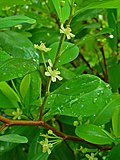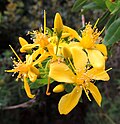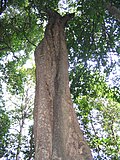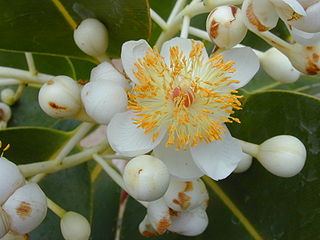
| Flowering plant families (APG IV) | |||||
|---|---|---|---|---|---|
| Early-diverging flowering plants | |||||
| Monocots: Alismatids • Commelinids • Lilioids | |||||
Eudicots
|
The COM clade consists of, and is named for, three orders of flowering plants: Celastrales, Oxalidales and Malpighiales. [lower-alpha 1] A subgroup of the rosids, it is divided into 45 families of trees, shrubs, vines and herbaceous perennials and annuals. [4] [5]
Contents
Coca leaves, containing small amounts of cocaine, have been chewed as a stimulant for thousands of years in the Andes. [6] Cassava crops provide a substantial source of carbohydrates in the tropics. [7] Bruguiera , Rhizophora and other mangroves are planted to protect coasts from storms and to anchor beach sand. [8] A single rootstock that supports a grove of quaking aspen may be the world's oldest living individual plant, at around 80,000 years. [9] Hybrids of the wild pansy ( Viola tricolor ) and other species of the violet family are grown as ornamentals, even in temperate winters. [10]













































